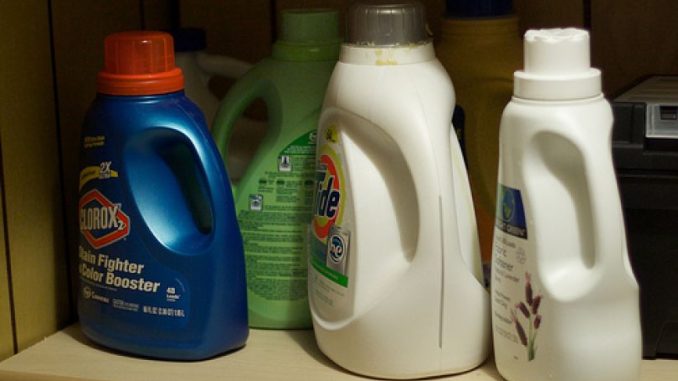
Researchers from the University of Colorado Boulder have said that toxic substances in fracking fluid have been found in many everyday household items, including toothpaste, detergent, and ice cream.
Their findings, published in the journal Analytical Chemistry, prove what many people have long-thought: that contamination of water supplies may be traceable to the chemicals used in fracking.

BYPASS THE CENSORS
Sign up to get unfiltered news delivered straight to your inbox.
You can unsubscribe any time. By subscribing you agree to our Terms of Use
Latest Video
Naturalnews.com reports:
“This is the first published paper that identifies some of the organic fracking chemicals going down the well that companies use,” says the paper’s lead author and a co-founder of the Laboratory for Environmental Mass Spectrometry in CU-Boulder’s College of Engineering and Applied Science, Michael Thurman. “We found chemicals in the samples we were running that most of us are putting down our drains at home.”
The paper, titled “Analysis of Hydraulic Fracturing Flowback and Produced Waters Using Accurate Mass: Identification of Ethoxylated Surfactants,” notes the specific surfactants found. It states, “Two series of ethylene oxide (EO) surfactants, polyethylene glycols (PEGs from EO3 to EO33) and linear alkyl ethoxylates (LAEs C-9 to C-15 with EO3-EO28), were identified in hydraulic fracturing flowback and produced water . . . ” According to the Occupational Safety & Health Administration (OSHA), ethylene oxide is present in a range of commonly-used household products ranging from detergents and antifreeze to cosmetics and spices. They also note that it’s linked to a host of problems including dizziness, spontaneous abortion, nerve damage and impaired memory.
To conduct the study, researchers obtained fracking fluid samples from five states — Colorado, Louisiana, Nevada, Pennsylvania and Texas — then analyzed the surfactants in these fluids at a mass spectrometry laboratory sponsored by Agilent Technologies, Inc., where state-of-the art instrumentation was provided.
Additional studies needed to consider variables in fracking process and address other concerns
Because the chemicals in fracking fluid are considered to be proprietary mixtures designed to extract as much oil and gas as possible, hesitancy to reveal chemicals remain due to fracking industry competition. While state and federal regulations do require disclosure regarding the chemicals used, only broad chemical categories are typically provided. Furthermore, variations in the fluid mixtures also exist due to the differing geology surrounding different well sites, and as such, researchers involved with this study note that their findings are not necessarily applicable to all existing wells. Researchers in this study, however, say that they are moving forward with plans to conduct a larger study that will look into samples from other wells in an effort to address these matters further.
Additionally, Thurman expressed concern about other fracking-related issues that he says warrant investigation such as air pollution, the quantity of water used and earthquakes occurring from wastewater disposal.
Air pollution as it pertains to fracking is a very real concern.
In fact, recent findings in a study led by Dr. David Carpenter, director of the Institute for Health and the Environment at the University at Albany-State University of New York, show that air samples near fracking wells contain hydrogen sulfide levels that exceed federal standards by 90 to 60,000 times. Researchers also found there to be very high levels of benzene and formaldehyde around these areas. Formaldehyde is a known carcinogen linked to leukemia and nasopharyngeal cancer, while hydrogen sulfide has been associated with health hazards such as eye irritation and asthma.


